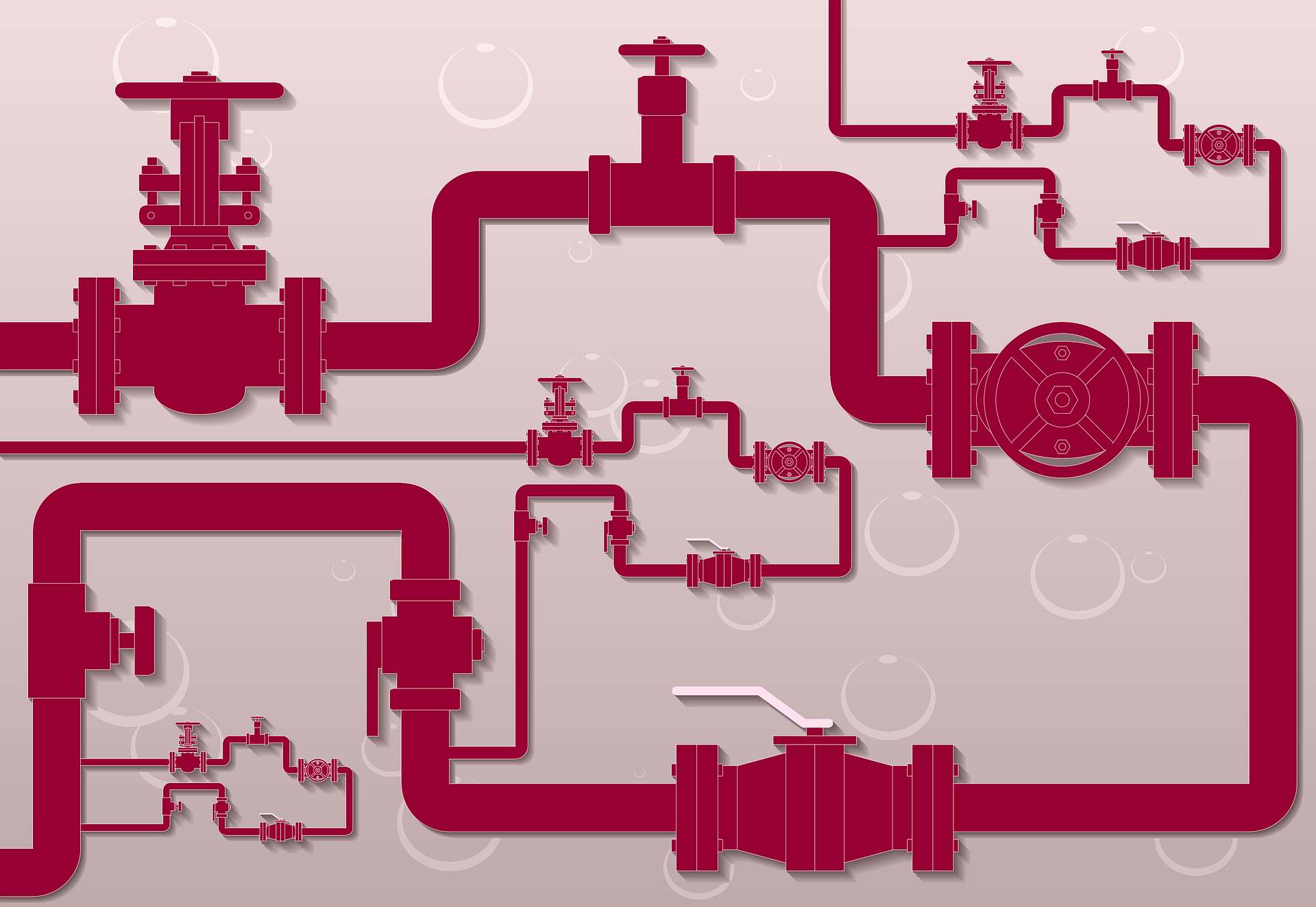The regulatory technological base for the operation of individual materials and elements is the key to productive business processes

A wide variety of materials are used in any production process. Since each material has its own specifics of application, compliance with the norms and technological structure is responsible not only for the quality of the expected result, but also for safety in production processes. As more and more companies operate at the international level and interact at almost every stage of product development, international standards are being created to determine a single technology and resolve possible inconsistencies. In this article we will acquaint you with some of the most essential standards for companies and organizations involved in production processes and in the operation of certain types of materials and substances.
Components for supply systems for consuming units with liquid fuels
Safety in the context of test methods is a very important issue for the operation of various substances. In order to minimize the occurrence of possible risks, international standards are created. One such document is SIST EN 12514: 2020. This European Standard specifies the safety and performance requirements and tests methods for the components for supply systems. Their intended use is the supply with liquid fuel for one or more consuming units from one or more tanks. This European Standard applies to pressurised, negative pressurised, unpressurised, underground, above ground, inside and/or outside systems to supply liquid fuels. The components for supply systems covered by this standard are piping kits/systems and their components. Not covered by this standard are items belonging to the consuming unit (e. g.: heating/cooling appliances in buildings) and items used for the mounting and support of components. Not covered by this standard are items with the intended use of gas for building heating/cooling systems and any items of heating networks. Not covered are items used for drainage (including highways) and disposal of other liquids and gaseous waste, supply of gases, pressure and vacuum systems, communications, sanitary and cleaning fixtures and storage fixtures. Since there are certain clarifications in this standard about the absence of specific elements, we recommend that you familiarize yourself with the technical characteristics in more detail to ensure that it fully meets the requirements of your company.
Condensing units for refrigeration - Rating conditions, tolerances and presentation of manufacturer's performance data
An international system of standards is being created not only for manufacturing and business processes, but also for regulating the operational aspects of various devices and technologies. One such standard is EN 13215: 2016 + A1: 2020. This European Standard specifies the rating conditions, tolerances and presentation of manufacturer's performance data for condensing units for refrigeration with compressors of the positive-displacement type. These include single stage compressors and single and two stage compressors having an integrated means of fluid sub cooling. This is required so that a comparison of different condensing units can be made. The data relate to the refrigerating capacity and power absorbed and include requirements for part-load performance where applicable. If your field of activity comes into contact with the technologies described in this document, we recommend that you familiarize yourself with it in more detail using the link to our website.
Metallic industrial piping - Part 3: Design and calculation
Costing systems have their own specifics and vary depending on the area in which they are applied. To regulate them at the international level and in certain areas, international standards are being created. One such standard is EN13480-3: 2017 / A2: 2020. Specifies the design and calculation of industrial metallic piping systems, including supports, covered by EN 13480. Revision of Clause 12 and Annex H related to Stress Intensification Factors SIF Since this standard is an addition to a more extensive document, we recommend that you clarify which standard you need in order to avoid a lack of possible details.
Carbonate and silicate liming materials - Determination of reactivity - Potentiometric titration method with hydrochloric acid
Various substances are used in any production process. International standards regulate not only the global process, but also explain in detail the individual stages and elements. One such standard is EN 13971: 2020. This document specifies a method for the determination of the speed and effectiveness of the neutralizing potential of calcium carbonate, calcium magnesium carbonate and calcium magnesium silicate liming materials by potentiometric titration with hydrochloric acid. For liming materials coarser than 1 mm, it is essential to prepare the sample of a liming material by following exactly the description of Annex A. This method is applicable only to liming materials with a maximum particle size of 6,3 mm. The type of liming material can be identified according to EN 14069 and the particle size can be determined according to EN 12948. This document has a large number of technological refinements. If you are not sure that the standard is completely suitable for you, but you are interested in purchasing a document of this industry, contact our team, which will help you in resolving your questions.
Environmental Solid Matrices - Determination of polychlorinated biphenyls (PCB) by gas chromatography - mass selective detection (GC-MS) or electron-capture detection (GC-ECD)
Chemical elements in the process of use entail the emergence of a large number of risks. That is why international standards are created to create a structured, streamlined process. One of these narrow-profile standards is EN 17322: 2020. This document specifies methods for quantitative determination of seven selected polychlorinated biphenyls (PCB28, PCB52, PCB101, PCB118, PCB138, PCB153 and PCB180) in soil, sludge, sediment, treated biowaste, and waste using GC-MS and GC-ECD (see Table 2). The limit of detection depends on the determinants, the equipment used, the quality of chemicals used for the extraction of the sample and the clean-up of the extract. Under the conditions specified in this document, lower limit of application from 1 μg/kg (expressed as dry matter) for soils, sludge and biowaste to 10 μg/kg (expressed as dry matter) for solid waste can be achieved. For some specific samples the limit of 10 μg/kg cannot be reached. Sludge, waste and treated biowaste may differ in properties, as well as in the expected contamination levels of PCB and presence of interfering substances. These differences make it impossible to describe one general procedure. This document contains decision tables based on the properties of the sample and the extraction and clean-up procedure to be used. If you are interested in this standard, you can clarify all the details and questions that have arisen by clicking on the link where more detailed characteristics of the document are posted.

Stationary source emissions - Bioaerosols and biological agents - Sampling of bioaerosols and collection in liquids - Impingement method
Technological features of the use of individual elements of production significantly affect how exactly the whole process will be adjusted. To create a successfully functioning global system, it is necessary to pay a lot of attention to each stage. One of the standards that regulates individual technologies in the whole process is EN 17359: 2020. This document contains specifications for active sampling of bioaerosols from exhaust air flowing through a defined cross-section of a stack. It defines general principles that have to be taken into account during an isokinetic sampling campaign for bioaerosols by bubbling the exhaust air through a specific impinger designed for emission measurements. In this document the application with culturable organisms is specified but the same principle might be applicable for non-cultural based methods (e.g. molecular and/or enzyme-based methods). The impinger is designed to allow a sample volume flow of 1 m3/h to 1,8 m3/h, or 16 l/min to 30 l/min, respectively, and has been tested with regard to various microorganisms within broad concentration ranges. This standard has many amendments and clear technical terms and parameters. In order to choose the most correct document for the development of your company, we recommend that you seek help from professionals by clicking on the link attached above.
Exact compliance with the rules - a guarantee of significant minimization of risks in the process of carrying out business activities
The wide variety of materials in production increases the number of possible risks. The operation of various substances also significantly affects the business processes and the safety of individual stages of their implementation. If you want to go international or are already operating in global markets, we recommend that you have the international standards applicable to your industry in place. If you do not know which document is most suitable for you to optimize the processes of your company, we will be happy to help you choose the most correct standard. You can follow the link to our website and contact our managers to clarify all the details and questions. Stay with iTeh and scale up new opportunities.
References:
https://standards.iteh.ai/catalog/standards/cen/35db5d55-3ff5-4f5f-81e0-01773c760d8e/en-13971-2020
https://standards.iteh.ai/catalog/standards/cen/bd16cd16-70b0-4f08-8ad6-e3d3e125c05b/en-17322-2020
https://standards.iteh.ai/catalog/standards/cen/5ed0aec9-888a-41ab-a4b8-6ed03e87dcba/en-17359-2020
Categories
- Latest News
- New Arrivals
- Generalities
- Services and Management
- Natural Sciences
- Health Care
- Environment
- Metrology and Measurement
- Testing
- Mechanical Systems
- Manufacturing
- Energy and Heat
- Electrical Engineering
- Electronics
- Telecommunications
- Information Technology
- Image Technology
- Road Vehicles
- Railway Engineering
- Shipbuilding
- Aircraft and Space
- Materials Handling
- Textile and Leather
- Clothing
- Agriculture
- Food technology
- Chemical Technology
- Petroleum
- Metallurgy
- Wood technology
- Rubber and Plastics
- Paint Industries
- Construction
- Civil Engineering
- Military Engineering
- Entertainment





